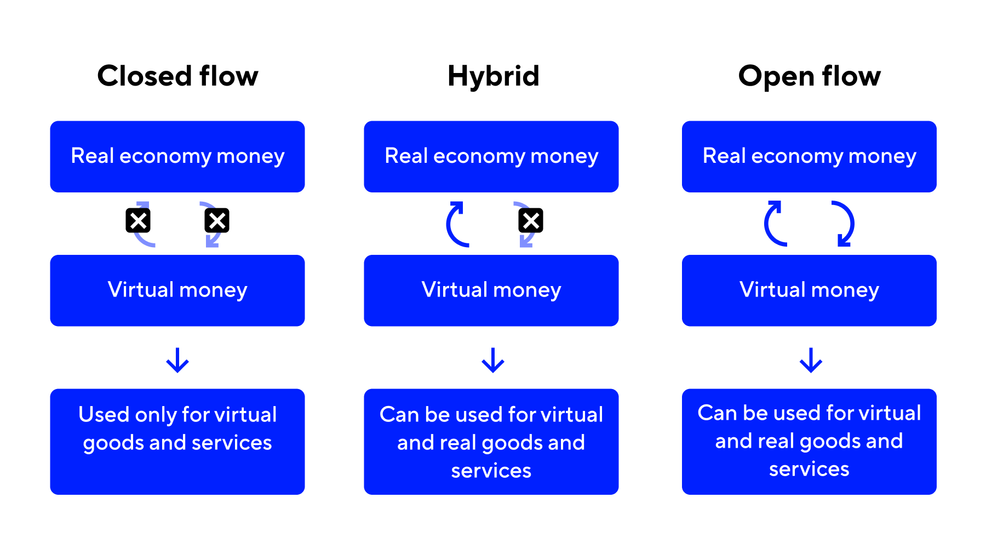Savor the Flavors: Bombay Beijing Fine Foods
Exploring the fusion of Indian and Chinese cuisines with delicious recipes and culinary tips.
Virtual Item Economy: Where Pixels Become Profit
Discover how virtual items are transforming gaming into a profitable marketplace. Explore the pixel economy and turn your passion into profit!
Understanding the Virtual Item Economy: How Digital Goods Are Reshaping Commerce
The virtual item economy has rapidly evolved, driven by the rise of digital platforms and online communities. In this new age of commerce, digital goods—ranging from in-game items and skins to virtual real estate—are seeing unprecedented demand. This shift is largely fueled by younger generations who prioritize experiences and social interactions over traditional material possessions. As digital goods gain popularity, they're creating a unique marketplace that allows users to buy, sell, and trade virtual items, often for significant profits. The implications of this economy extend beyond gaming, influencing industries like fashion and art, where virtual representations are ushering in new trends and reshaping consumer behavior.
Moreover, the impact of virtual items on commerce is significant and multifaceted. Businesses are increasingly incorporating digital goods into their revenue models, recognizing the potential for high margins and customer engagement. For instance, brands are launching virtual merchandise on platforms like Roblox and Fortnite, tapping into thriving communities that are eager to showcase their identities through digital assets. The convenience of purchasing and trading these items creates a dynamic ecosystem where users are not just consumers but active participants in the economy. As we move forward, understanding the virtual item economy will be crucial for businesses aiming to innovate and secure their place in the future of commerce.

Counter-Strike is a highly popular series of multiplayer first-person shooter games that pits teams of terrorists against counter-terrorists. Players can engage in various game modes, strategize, and improve their skills over time. For those interested in enhancing their gameplay experience, using a daddyskins promo code can provide valuable in-game items and skins.
The Rise of Virtual Item Trading: Opportunities and Risks for Gamers and Investors
The rise of virtual item trading is reshaping the landscape of gaming and investment. With the advent of blockchain technology and the increasing popularity of online games, players are now able to buy, sell, and trade in-game assets like never before. This burgeoning market presents opportunities not only for gamers looking to monetize their skills and time but also for investors seeking to capitalize on the growing demand for digital collectibles. As in-game items can now often be tokenized and securely traded on various marketplaces, the potential for high returns becomes increasingly attractive, making it an enticing avenue for both hobbyists and serious investors alike.
However, alongside these opportunities come significant risks that must be considered. The virtual item trading market lacks regulatory oversight, which can lead to volatile pricing and the potential for scams. Moreover, as gamers invest real money into virtual assets, there is always the risk of losing their investments if a game shuts down or if the market sees a downturn. Furthermore, new players entering this space should be wary of the psychologies of gamification, as the appeal of trading and collecting can lead to impulsive decisions that overshadow sound investment strategies. Thus, navigating this evolving landscape requires caution and informed decision-making.
How to Profit from Virtual Items: A Guide to Buying, Selling, and Trading in the Digital Marketplace
In today's digital age, virtual items have emerged as a lucrative asset for many. Whether you're an avid gamer, a digital artist, or simply exploring the online marketplace, understanding how to profit from virtual items is crucial. Start by identifying popular platforms that facilitate the buying and selling of these assets, such as Steam, eBay, and specialized marketplaces like OPSkins or PlayerAuctions. Conduct thorough research to determine which items hold value and can yield profits. Keep an eye on market trends and fluctuations to make informed buying decisions. These steps will set a solid foundation for your journey into the digital marketplace.
Once you've acquired virtual items, the next step is optimizing your selling strategy. Create engaging listings that highlight the unique features of your items by including high-quality images and detailed descriptions. Utilize SEO techniques by incorporating keywords such as buying, selling, and trading to reach a broader audience. Additionally, consider networking within gaming communities and social media platforms to tap into potential buyers. Remember, consistency is key; continually reassess your inventory and engage with prospective customers. By following these guidelines, you can turn your passion for virtual items into a profitable venture.